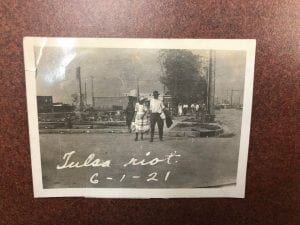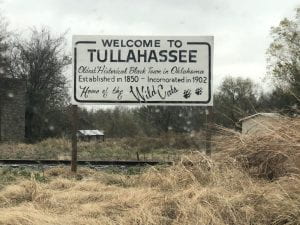As the world enters its first fall season in the midst of a global pandemic, students and professors at AAP NYC persist in their academic pursuits, making the most out of every socially distanced discussion, Zoom call, and virtual pin-up. Sean Anderson, a visiting lecturer here at AAP NYC, has accepted the challenge of teaching in a COVID-19 world and risen to the occasion by lecturing online to his Ithaca-based students, and simultaneously in person to his NYC students. Outside of the classroom, Sean maintains his position at MoMA as Associate Curator. Both at Cornell and at the museum, he seeks to foster inclusive dialogues and introduce underrepresented narratives at the intersection of architecture and history. Personally, I have enjoyed him as a professor and believe that his course, named Property this semester, has been vital to my understanding of architecture, both with a capital A and as a broad way of thinking about and framing spaces. As a fifth year B. Arch. about to start my thesis, I think the questions asked in this course are the ones I should be asking again and again as I research, design, or even search for a job post-grad. It was a pleasure to sit down with Sean virtually and ask him some questions for a change about teaching, working, the state of our world, the MoMA, and the future.
JS (Jacob Swaim): Can you tell me about the class you are teaching virtually this semester at AAP NYC? How does the content differ from the class you taught last year? Does it build upon topics from last year?
SA (Sean Anderson): This is my third year teaching for AAP NYC and what a great pleasure it has been to meet students who are discovering New York City while at the same time engaging with the city’s histories and narratives. I see teaching as a productive extension to everything I do and want to share my own thinking in an iterative process–focused way. I want to be questioned by the students and learn from them as much as I hope they gain from our discussion.
Each year, I try to create a broad theme around which the seminar is based while also reflective of the work I am doing at the museum. This is not a “How To Curate” class! I think of it as a “Reconsider Your Thoughts About The History of Spaces” class, where you can also evaluate the ways in which your thesis work can be shaped by provocation and critical questioning. I also bring in as many diverse voices on the theme at hand as possible—in particular, individuals who have tremendous ideas but may not be as well known as others. This year’s titled theme, Property, builds on last year’s theme, Bordering. Both broad thematics allow me to integrate longstanding research I have been doing on the intersections of colonialism and modernism with a focus on continental Africa while also considering the here and now.
JS: What challenges or opportunities does virtual instruction present to your teaching? For instance, in the past, you’ve taken students to the MoMa. Do you plan on giving them that experience in a virtual format?
SA: I like to walk and interact with students in person–there remains a conceptual distance with teaching online that cannot be overcome even with a spate of (bad) jokes and gossip! I stand between a large screen with a zoom grid and those in NYC, and I think of a (poor) dancer between two worlds. It has been an ongoing discussion as to how to bring the NYC students to the museum in a safe, responsible way that also allows each of the students joining virtually to be part of the “tour” and conversations. The museum has only been reopened for a little over a month now and we are taking all precautions to present an exhibition experience that maintains social distancing and other protocols.
JS: How does your position as associate curator inform how you teach the class?
SA: I have been teaching longer than I have been a curator—and more design studios than history! Yet, I recognize that the museum is an essential educational space. It has been at once liberating for me to work in the museum context while also teaching—all the while recognizing the potential for overlaps, for shared conversations, for understanding the contours and methods of questions that I might ask in class as a result of similar ones I am asking in and of the museum.
JS: I know you ask your students to talk about exhibitions they have gone to. Why do you ask them to do this? How do you encourage them to think critically?
SA: Seeing and thinking are linked biologically and aesthetically. The more we see (and read), I contend, the better we will be able to imagine and respond to the world in a critical manner. The AAP NYC program offers the opportunity to explore the city on one’s own terms while also intersecting with the likes of me and others who might be able to introduce a more specialized, nuanced view outside the classroom. In our case, exhibitions and museums have been an extension of the classroom but that has changed somewhat this year, of course.
JS: I know you’re currently curating an exhibition. Can you briefly describe its content and its message?
SA: Mabel O. Wilson at Columbia and I have an upcoming exhibition entitled Reconstructions: Architecture and Blackness in America that was originally scheduled to open October 15. This will be the first time that African American and African Diasporic architects will be shown in the Museum in 91 years! The work of Paul Revere Williams was shown in 1936 as part of an exhibition on housing but was unattributed until Mabel tracked the work down in her fantastic essay about such absences at MoMA, “White By Design.” The exhibition includes 10 architects and artists (including two Cornell AAP Alumni!) as well as the work of the photographer David Hartt, who has produced a suite of photographs and a video that we will show. Each participant was invited to choose one American city to focus their research and investigations. We then commissioned each of them to produce new works around a set of questions that we developed with them. I have reimagined this semester’s class to focus on the essential narratives and problematics of the exhibition’s evolution. The exhibition has been about 2.5 years in the making so I have enjoyed returning to key texts and ideas with which we began our research.
JS: Who do you collaborate with? Has having to coordinate the curation of it virtually been challenging?
SA: Certainly working online mostly has been challenging to say the least—we are simultaneously designing an exhibition; editing a book; working on the production, design and logistics of each participant’s works for the show; and having to manage budgets and public engagement virtually. I am often writing five or more emails simultaneously with minor tweaks to different people to ensure that one aspect has been thoroughly reviewed! We also must maintain fairly strict deadlines for everyone. But none of this would have been possible without our incredible Curatorial Assistant Arièle Dionne-Krosnick, with whom I worked on my first exhibition at the Museum titled Insecurities: Tracing Displacement and Shelter in 2016. For this exhibition, I am co-curating with the always astounding Mabel O. Wilson at Columbia whose groundbreaking work on these questions is nothing short of monumental. And I had the great pleasure of working on image rights and research with a 12-month museum intern, Aaron Smithson, who is now at the GSD. Our little team interfaces with many more of the museum staff who ensure that every aspect of the exhibition is achieved.
JS: Have you had to adapt any design or curatorial decisions to align with a COVID-19 world?
SA: Absolutely! We have had to not only rethink how the exhibition is staged but also every aspect, small and large. From how many individuals are allowed in the gallery to how is sound produced (QR codes or speakers?), to how many objects can be hung when staff in the gallery is limited, and locating works far enough apart to keep people from congregating around them. We also will have to rethink the labeling of the works as well as ensure that prominent surfaces do not allow touching and other forms of bodily interference. It feels like we are still learning how to confront these new protocols–this contagion–with every discussion.
JS: How has George Floyd’s murder and the subsequent protests against police brutality and systemic racism across the nation influenced the final design of the exhibition?
SA: The brutal violence of the recent past is never far from our thoughts—in both the making of the exhibition and the participants’ minds and works. These instances are a continuation of long standing anti-Black racism throughout the U.S. At every scale and space in our nation’s design has been the continued and often legalized processes to devalue, disenfranchise, and displace BIPOC communities and individuals. We must acknowledge these narratives and yet we must also refuse their intention to continually divide. The exhibition attempts to reconcile the capaciousness of Black life (its beauty, histories and interiorities) while also asserting that Black spaces fundamentally reconfigure paradigms of architecture and the architecture profession as essential to who we are and who we wish to become.
JS: Would you say that this exhibition marks MoMa’s effort to broaden the range of narratives it represents in its collections?
SA: Yes! But there is a far more complex set of politics that I perhaps should not delve into for this interview. Indeed, the discussions we have been having since this spring throughout the museum do represent a sea change with not only the what of exhibitions, but for many of us it is essential to keep articulating and amplifying the who, of our past, present, and future.
 Unattributed photograph from the third and last day of the Tulsa Riots (June 1, 1921) from the Oklahoma Archives and Records Commission, Oklahoma City.
Unattributed photograph from the third and last day of the Tulsa Riots (June 1, 1921) from the Oklahoma Archives and Records Commission, Oklahoma City.
 Sign for Tullahassee, Oklahoma (in the rain); often built with the cooperation and/or lease granted by Native American individuals, All-Black communities, as conceived by Edwin McCabe and others, prospered throughout the 1920s.
Sign for Tullahassee, Oklahoma (in the rain); often built with the cooperation and/or lease granted by Native American individuals, All-Black communities, as conceived by Edwin McCabe and others, prospered throughout the 1920s.
